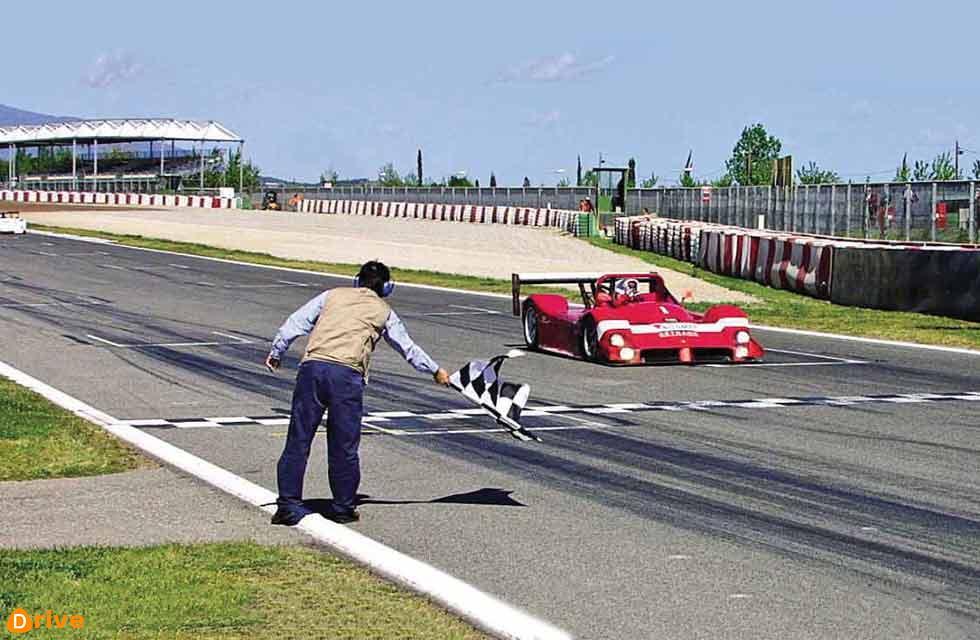Meanwhile, at the circuit… The Ferrari F50 was an F1 car for the road. So, what about turning an F1 car into a sports racer? Enter the 333SP. Words Richard Heseltine.
Sentiment is rarely the best lens through which to view anything. However, to motor sport fans of a certain age, the Group C era of 1982-1992 was the last truly great period of sports car racing. But the final season is best forgotten, as grids barely stretched into double figures. Stateside, the situation wasn’t much better, with the closely related IMSA GTP series holding out for one more year.

Except the classic sports-prototype wasn’t done just yet. Witness the Ferrari 333SP with its 3997cc F1-derived V12. The Scuderia had pulled out of frontline sports car racing back in 1973, and it was left to adapted road cars to make up the numbers into the early ’80s – and then nothing. However, following protracted lobbying, Ferrari bowed to pressure and created this fabulous machine with a little help from a few friends such as designer/constructor Gian Paolo Dallara and Tony Southgate, whose resume included F1, Indy 500 and Le Mans winners. At a stroke, the 333SP lent credibility to the new-for-1994 IMSA WSC category, but it would also go on to do rather well in Europe.
‘When Group C ended, my contract with Toyota was also over so I had to find myself a new job,’ Southgate recalls. ‘The ACO [organising body] had announced that future Le Mans races were going to be for roadgoing GT cars. I thought, ‘Who has a roadgoing GT car and might need some help?’ I’d heard that Ferrari was working on such a car so I gave Luca di Montezemolo a call; I knew him from F1. He said they weren’t building a GT car but an IMSA sports-racing car – and they needed some help. I went to Maranello and negotiated a deal with Ferrari whereby I would be the design consultant on the 333SP project. I was pleased to learn that Dallara was involved in the suspension and gearbox design and also responsible for the manufacture of much of the car. At that point Ferrari was making the carbon monocoque tub and the engine.
‘I knew Dallara from my F1 days so it was an easy marriage. Mauro Rioli was the chief engineer on the project; he worked for Ferrari and was based in Maranello. I would travel to Ferrari/Dallara every other week and stay over for up to a week at a time. The car was around 70% complete when I arrived, and thanks to Dallara’s engineering it looked good.
There were a few areas I wasn’t happy with: it needed much more downforce at the front, so a new nose design was produced and some suspension geometry changes were also needed. Part of my job was to supervise the testing and development of the car and go to all the IMSA races to help set-up cars for customers. There was no works team.’
Debuting at Road Atlanta in April 1994, Jay Cochran led home Giampiero Moretti for a Ferrari one-two finish. The following year the model racked up the first of three Sebring 12 Hours successes and, while conceived primarily with the US in mind, the 333SP also claimed class honours at Le Mans in 1998.
‘The Le Mans project was Andy Evans’ baby with the consent of Ferrari,’ Southgate adds. ‘I worked for Andy on that car, producing much- modified, low-drag bodywork to get the top speed up from 185 to 204mph.’ Remarkably, the 333SP was still winning in the new millennium, with an end tally of 56 outright wins and 69 pole positions.
There was never any talk of a replacement; there was no need for one. ‘The car was state of the art when produced and designed for IMSA so it was always going to last a long time,’ Southgate says. ‘Americans have a different mentality to cars than Europeans. They want value for money and that means durability. They want to race them for years. By Ferrari standards, the 333SP was a low-budget project. No replacement was planned while I was there and I joined in 1993 and left towards the end of 1996. It was a lovely car, and should I ever win the lottery I’m buying one…





